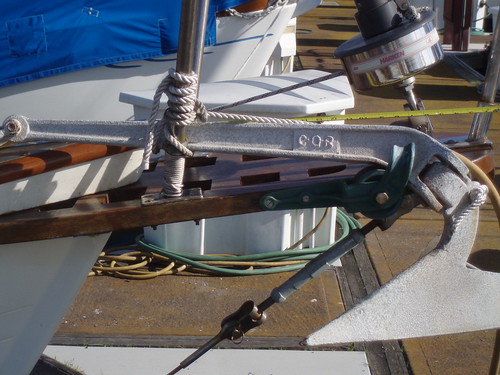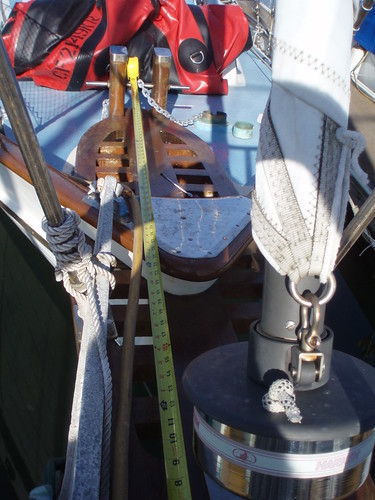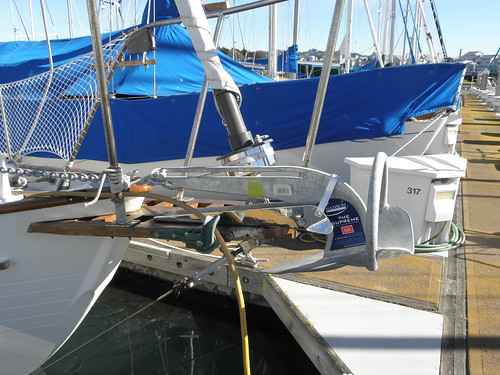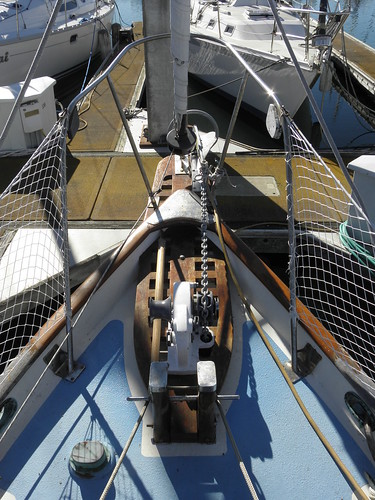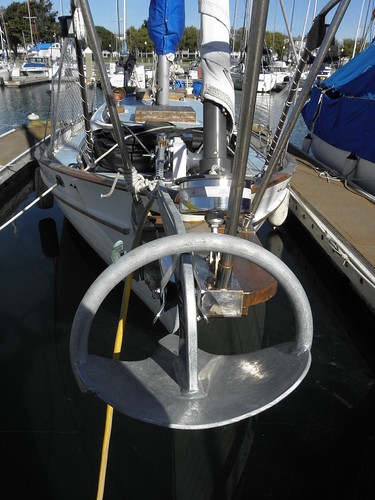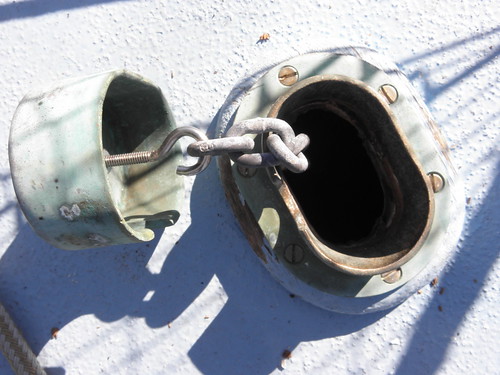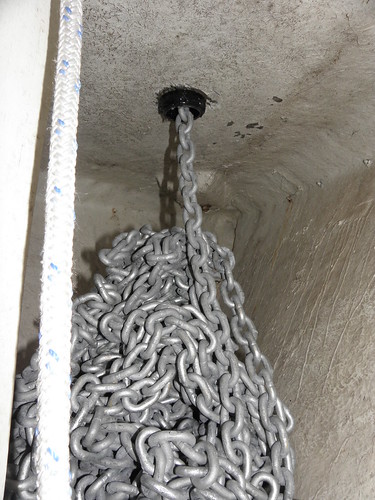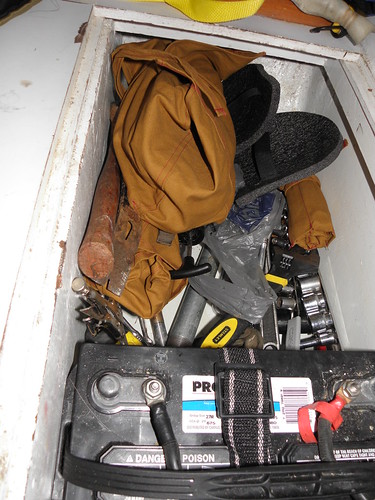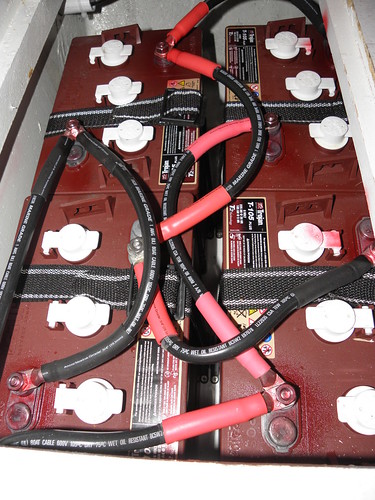Rhapsody came with an old Raritan head with all the usual age-induced "features" - dry seals, random leaks, and even a cracked pump body. I tossed it and installed a new
Jabsco toilet. I considered the Lavac, but was under the mistaken impression that the Jabsco would be a simpler affair. If only!
 |
| The original Raritan head |
My first surprise was after installing and testing (not _that_ sort of testing, thankfully!) was water seeping from under the setee in which the holding tank is built. Re-sealing the openings (intake, vent, and pumpout) didn't help, so I used my reciprocating saw (part of a
Ryobi kit, which has so far been a really great set of cheap power tools) to open up the plywood-and-epoxy tank, but still could not find the leak. I coated the inside of the tank with several layers of
Gluvit, which stopped the waterworks.
After moving the pump to the other side and rebuilding the floor plate, I managed to get the Jabsco head shoehorned in, and then ignored everything for a couple months. I finally finished the plumbing, which ended up as this:
- Intake water comes through a seacock to the head pump
- Water from the head pump is routed through a vented loop and back to the toilet bowl. The vented loop keeps our boat from sinking in the event of head pump failure, and we continue to keep the seacock shut when we aren't aboard
- The toilet discharges into the holding tank. The holding tank is a plywood and epoxy built-in unit of about ten gallons. It's located under a settee immediately adjacent to the head, so plumbing is minimal.
- The pumpout pickup exits the tank to a T-fitting, where
- A deck fitting may be used to pump out the tank, or
- A Guzzler diaphragm pump may be used to pump the holding tank overboard through a seacock. This seacock stays closed and locked except when we're actually pumping waste overboard.
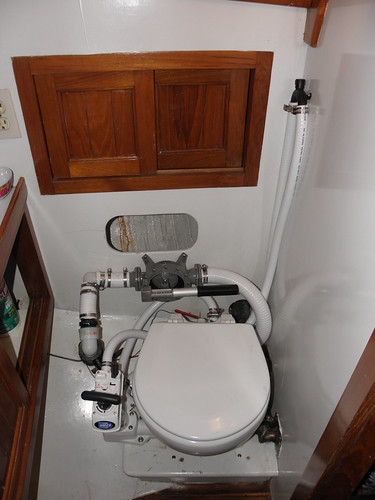 |
| Jabsco head installed and plumbed. A little industrial, but very functional |
